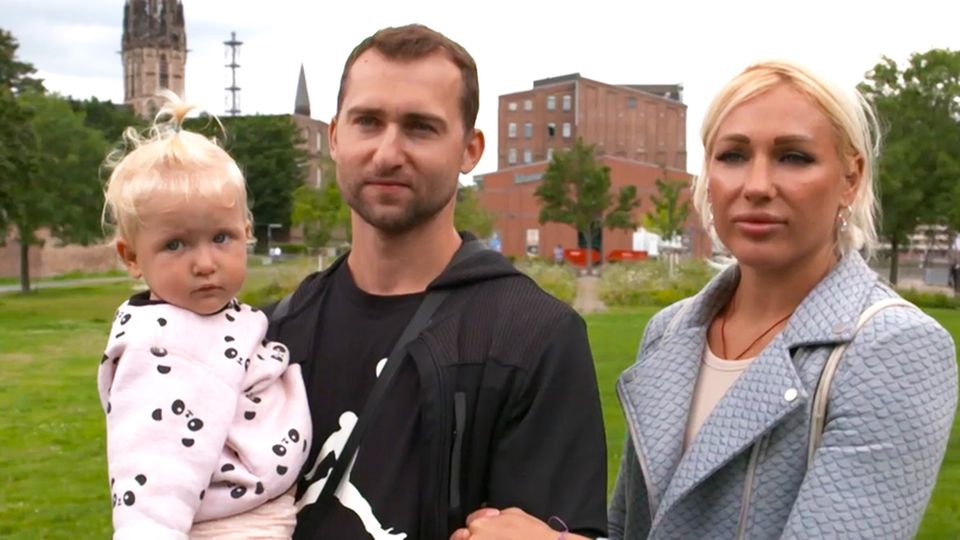Agreement after a long dispute
External borders, asylum procedures, redistribution: This is what the EU is planning in its asylum reform
A minor Syrian, picked up by the federal police near the German-Polish border in Forst (Lausitz)
© Patrick Pleul / DPA
The EU had struggled for asylum reform for a long time. Now the states have reached an agreement. What exactly should change – an overview.
What is the EU asylum reform about?
Essentially, the five legal texts are about stricter asylum rules and relieving the burden on main countries of arrival such as Italy or Greece. The European Union Asylum Agency is expecting more than a million applications this year, which would be the highest number since 2015 and 2016. Almost a third of these are likely to come from Germany.
What is planned at Europe’s external borders?
For the first time, there will be asylum procedures directly at the EU borders in order to prevent migrants with particularly low chances of being accepted from continuing their journey. This applies, for example, to people from Morocco, Tunisia or Bangladesh, who have a maximum of 20 percent recognition rate in the EU.
Under pressure from member states, those who are classified as a “threat to national security or public order” or who have misled the authorities, for example with a false passport, are also included in the border procedures. All those affected will receive free legal advice at the request of the EU Parliament.
What happens during border procedures?
The migrants should be held near the border and deported directly from there. Legally, they are considered not to have entered the country. The asylum procedure and repatriation should usually take up to twelve weeks. The member states initially want to create 30,000 places in border camps, and after four years there should be 120,000.
Migration 2023
Most refugees come to Germany from these countries
Why was this controversial?
The federal government and especially the Greens insisted on exempting unaccompanied minors and families with children from border procedures. However, this central aim failed. However, the EU Parliament, in Germany’s interest, ensured that families with children were the last to enter border procedures, that their applications were processed first and that they were provided with “suitable reception conditions”. The EU asylum agency should monitor this.
Where else should there be asylum procedures?
Member states can return asylum seekers to “safe third countries” such as Tunisia or Albania. Migrants should have a “reasonable connection” to the third country, have access to the health and education system and “adequate means of subsistence”. There is currently no uniform EU list of safe third countries or countries of origin.
What are the plans for distributing migrants?
In the future, the country of first entry will generally be responsible for an asylum application. However, a mandatory solidarity mechanism is in place to redistribute at least 30,000 migrants from Italy or Greece every year. Theoretically, there would be around 6,600 people in Germany, but recordings from previous years can be deducted. Countries that are not willing to accept migrants, such as Hungary, can also buy their freedom with 20,000 euros per migrant or finance projects in third countries.

What about registering migrants?
So far, numerous people have arrived in Germany unregistered. This should change with the reform. Border countries such as Italy or Greece should register migrants’ biometric fingerprints or photos in the EU’s Eurodac database. For the first time, children aged six and over are affected; previously the age limit was 14. Anyone who poses a “security risk” should be specifically identified, especially if they have connections to “terror groups.” The quick check should take a maximum of seven days.
What happens when a particularly large number of refugees arrive?
This is regulated by a crisis regulation. Migrants with a recognition rate of up to 50 percent should then also go through the border procedures; they can then even be held for 18 weeks instead of twelve.
If refugees are “instrumentalized”, they should be sent completely through border procedures under pressure from the member states. This would also affect Syrians or Afghans, who have the highest chances of recognition. The EU recently accused Russia of using people as political leverage.
What’s next?
Member states and the European Parliament want to finalize the asylum pact by the European elections at the beginning of June. The EU countries then have two years to implement it. In the summer, when a particularly large number of migrants are expected in Europe again, the reform will not yet take effect.

